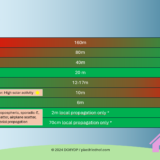Test: Do thermo-electric fireplace fans really work?
Fireplaces and ovens have long been used as a primary source of heat in homes. However, traditional fireplaces can be inefficient in heating up a room quickly and evenly. This is where thermo-electrical ventilators come in – they are designed to increase air circulation and improve the efficiency of heat distribution from fireplaces and ovens. But do they really work? In this article, we’ll share our test results on the effectiveness of thermo-electrical ventilators in improving the heat output of fireplaces and ovens.
Thermo-electrical ventilators are typically small, fan-like devices that are placed on the surface of a fireplace or oven. They work by harnessing the heat generated by the fireplace or oven and converting it into electrical energy, which in turn powers the fan to circulate air around the room. The aim of this process is to improve the distribution of heat, making the room feel warmer and more comfortable without the need of an external power source.
To test the effectiveness of thermo-electrical ventilators, we conducted a series of experiments using one fireplaces – once with a thermo-electrical ventilator and once without one. We used a thermometer to measure the temperature at various points around the room and timed how long it took for the room to reach a comfortable temperature of 20°C.
For our test we used two fireplace ventilators from manufacturer Boiphek *, which we could integrate into our oven, as they are only 19cm high.
- ✨【Upgrades 5 Blättern Kaminventilatorsr】 Der 5 Blättern Heißluft ofenlüfter kann mehr warme Luft erzeugen und die...
- ✨【Energiesparen Ventilator】 Keine Batterie oder Strom erforderlich. Es wird durch die vom Kamin oder Kaminofen erzeugte Wärme...
In our first test, we used our traditional wood-burning fireplace without a thermo-electrical ventilator. It took approximately 60 minutes for the room to reach the desired temperature, and the temperature was not evenly distributed throughout the room. Some areas of the room were noticeably cooler than others, indicating poor heat distribution.
In our second test, we used the same fireplace but this time with a thermo-electrical ventilator attached. The results were impressive – the room reached the desired temperature in just 45 minutes, a full 15 minutes faster than without the ventilator. You can even feel a slight wind from the ventilators. Furthermore, the temperature was evenly distributed throughout the room, making it feel much warmer and more comfortable.
In conclusion, our tests have shown that thermo-electrical ventilators can significantly improve the efficiency of fireplaces and ovens especially in smaller rooms. By increasing air circulation, they improve heat distribution and help to heat up a room faster. If you have a fireplace or oven in your home, investing in a thermo-electrical ventilator could be a worthwhile purchase to improve the comfort and warmth of your living space.
If you want to heat up larger rooms with more volume, you will feel the benefits in the nearer area around your fireplace, but do not expect the fans to reach the last corners of very large rooms. The harvested thermo-electrical energy is not high enough to power the fans in such a way that a very strong airflow will blow through a large living room, even if it helps to warm up the air a little faster.
* All links marked with an asterisk are Amazon affiliate links. We receive a percentage of purchases made through them. Nevertheless, our recommendations are honest and sincere.


